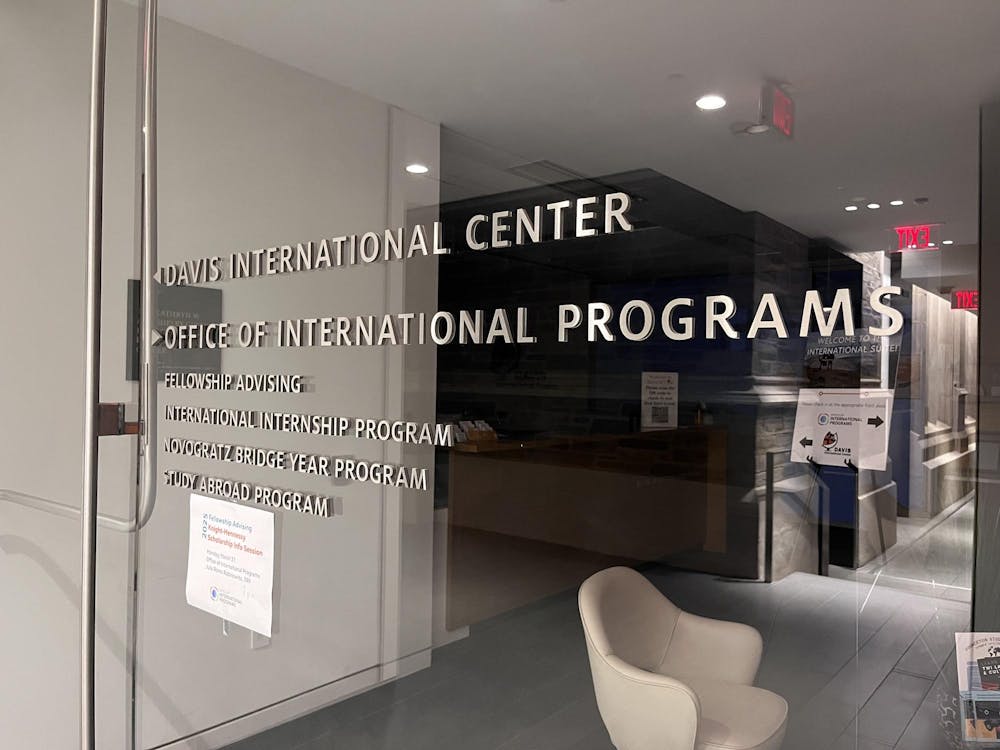In the spring semester of their sophomore year, Princeton students pursuing A.B. degrees are required to declare their majors. While most stick with their choices for the rest of their Princeton careers, some undergraduates overcome logistical hassles, complications with independent work and disappointed departmental representatives to change departments. Though the procedure for switching majors is relatively simple, requiring only approval from the respective departmental representatives and residential college dean, few make the leap.
Natasha Lavdovsky ’09, now a visual arts concentrator in the art and archaeology department, switched her major a total of four times after initially wavering between the visual arts and geosciences departments.
“I would say that each time I switched, it was [for] a different reason,” Lavdovsky explained. “Most of them were based on how I am basically like as a person: Torn in half as very artistic, yet very curious about the natural world.”
Lavdovsky ended up settling into the visual arts department during the first week of her senior year. Though her switch has required a “heavy [work] load this year,” Lavdovsky said, “Looking back, I wouldn’t change a thing, because I had awesome experiences.”
History departmental representative James Dun GS ’04 said academic requirements — like the mandatory fall-semester junior history seminar — make it problematic for students to switch departments after their sophomore year.
Because of this required seminar, “it’s just about impossible for second-semester juniors switching in,” Dun said. “It’d be pretty rough going.”
For those hoping to enter the French and Italian department late, the main barriers are language requirements and independent work. Departmental representative Andre Benhaim explained that students can only get credit for a junior paper written for another concentration if “it pertains in some way to France or Italy.”
When Julie Dickerson ’10 switched out of French and Italian into the application-based visual arts program, however, she was forced to write a new JP over winter break. “It sort of sucked, but that was fine,” she said.

For Zhang, though, her independent work consisting of a collection of paintings, poetry, translations and academic commentary inspired by Ovid’s “Metamorphoses” transferred to her new department in what she described as a “seamless transition.”
Zhang explained that, for her, “the hardest part [of changing majors] is really having the courage to switch.”
Many students who discover a new academic interest “feel they should still stick with their major,” she said. “I think it takes you a while to discover your real passions and that you should have a really flexible approach to education.”
Dun, who also serves as an undergraduate adviser, noted that he provides his underclassman advisees with information on an “array of potential majors” to make sure that students are pursuing their passions and will face minimal inconvenience at a later period.

“As they begin to take care of University requirements, sampling new things and covering the prerequisites, it makes students think about the possibility [of different majors],” he explained. “If they do change, they won’t have that much ground to make up.”
Though departments do not receive University funding or benefits according to their number of concentrators, the loss of a concentrator can be significant for smaller departments.
“Because we are such a small department and involve ourselves a lot with our students, being as we have that luxury of providing one-on-one advising, we lose all the involvement put into the students,” Benhaim noted.
He added, though, that “it’s not really a problem for [students switching out] as long as they have a good academic-intellectual reason.”
For Cindy Michalak ’09, who switched from architecture to visual arts, the decision was for personal reasons.
“With architecture,” she said in an e-mail, “I felt that the amount of work I had to do [in order] to do well in my studio class (for my junior independent work) was consuming my life.”
“I was ignoring work from my four other classes, having meals that were no longer than 15 minutes, slept very little and generally wasn’t enjoying my experience at Princeton,” Michalak added. “While I really liked architecture, I didn’t love it enough to let it take up so much of my life.”
Despite the difficulties switching concentrations entails, students should not be afraid to explore new opportunities, Zhang said.
“There are just so many areas of knowledge to explore,” she added. “You have to have a certain humility about it.”







